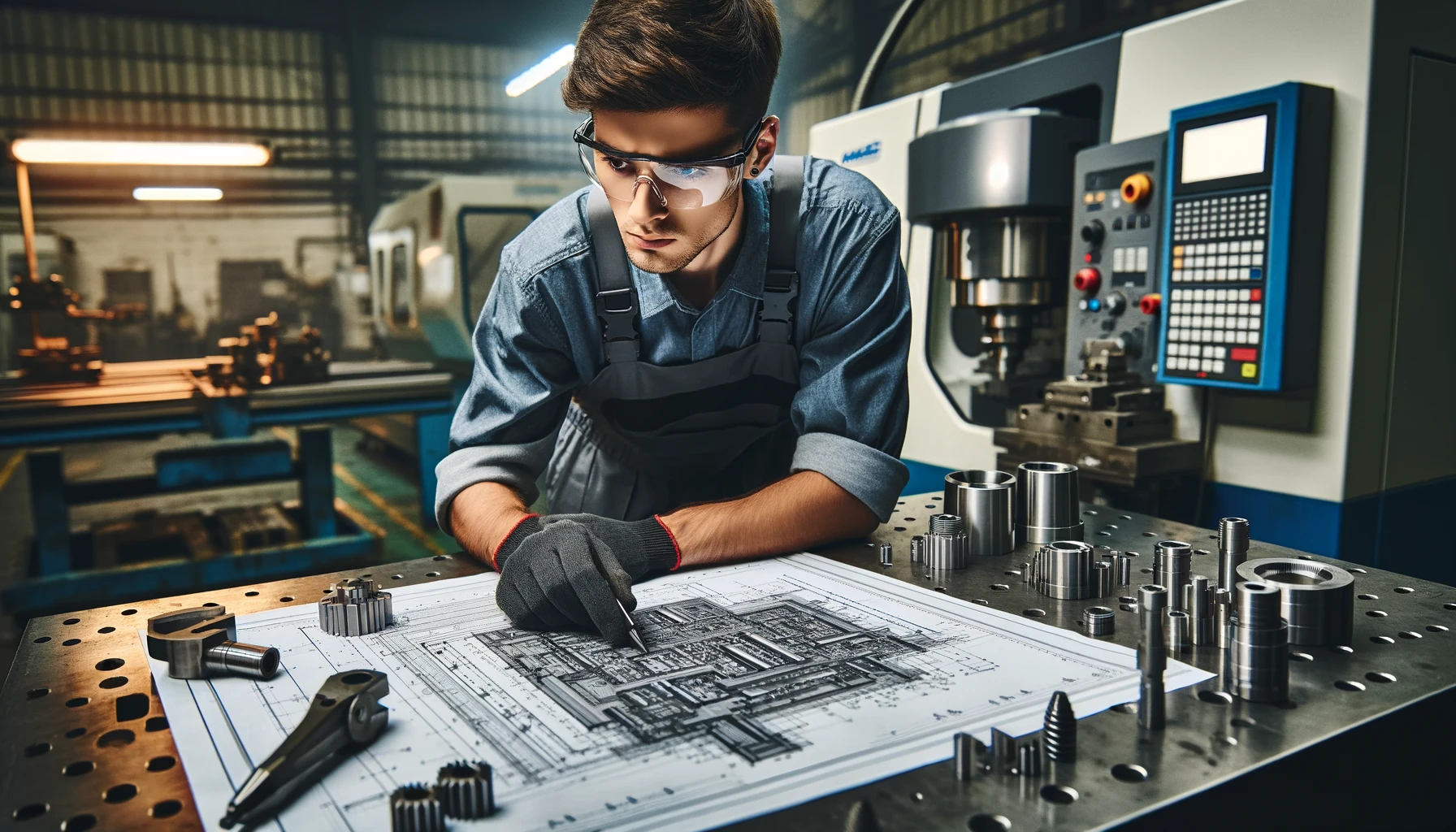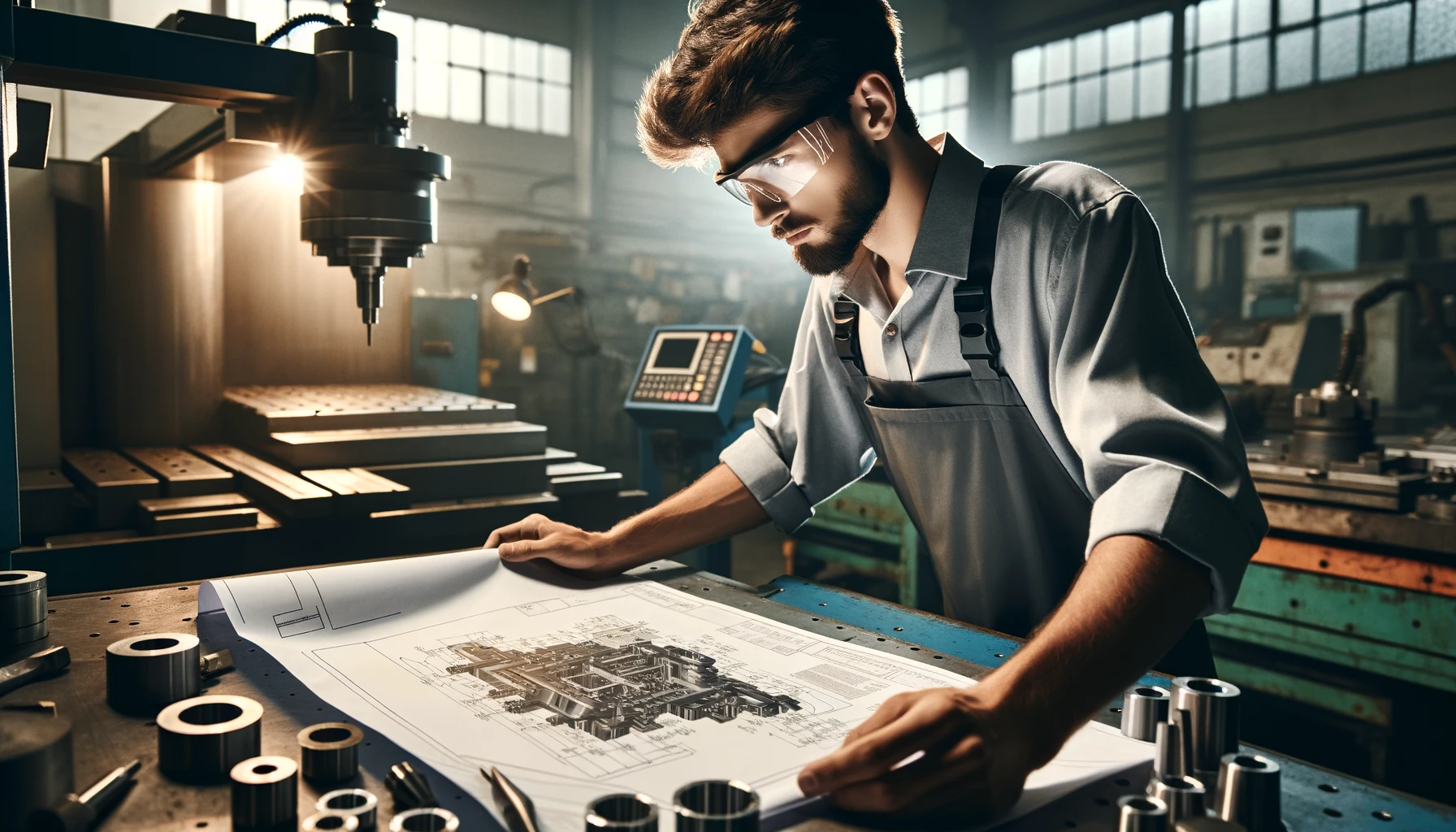Reading CNC blueprints requires a comprehensive understanding of various symbols, annotations, and technical specifications. These blueprints, also known as technical drawings or engineering drawings, contain crucial information for manufacturing parts using Computer Numerical Control (CNC) machines. To interpret CNC blueprints effectively, one must familiarize themselves with standard drawing conventions, including orthographic projections, dimensioning techniques, and tolerance specifications. The blueprint typically displays multiple views of the part, such as top, front, and side views, along with detailed cross-sections when necessary.
Key elements to focus on include material specifications, surface finish requirements, critical dimensions, and geometric tolerances. Understanding these components allows machinists and programmers to accurately translate the design into CNC machine instructions, ensuring the final product meets the intended specifications. It’s essential to pay close attention to notes and callouts on the drawing, as they often provide additional manufacturing instructions or special requirements. Proficiency in reading CNC blueprints comes with practice and experience, as well as staying updated on industry standards and drawing conventions.
- Blueprint reading is crucial for precision in manufacturing.
- Understanding symbols, dimensions, and annotations on CNC blueprints is essential for effective communication.
- Analyzing views, sections, and dimensions helps translate blueprints into actionable instructions for the CNC machine.
- Schematics provide detailed information about the electrical and electronic components of CNC machines.
- Mastering blueprint analysis techniques can enhance your understanding and interpretation of blueprints.
Understanding CNC blueprints
In the world of manufacturing, CNC blueprints serve as the foundation for creating precise and accurate parts. These blueprints provide a detailed roadmap that outlines the design, dimensions, and specifications of a component or product. As a skilled machinist or engineer, it is crucial to understand the key elements of CNC blueprints and how to interpret them effectively.
When it comes to understanding CNC blueprints, one must have a solid grasp of the symbols, dimensions, and annotations used. These elements convey critical information about the geometry, tolerances, materials, and finishing requirements of the part. By accurately interpreting these details, you can ensure that the end product meets the desired specifications and quality standards.
Let’s take a closer look at the key components of CNC blueprints:
Symbols
CNC blueprints utilize a variety of symbols to represent different features, such as holes, threads, surface finishes, and more. Understanding these symbols is essential for identifying specific design characteristics and manufacturing requirements. By interpreting the symbols correctly, you can accurately plan and execute the machining processes.
Dimensions
Dimensions are crucial in CNC blueprints, as they define the size and shape of the part. These measurements indicate the required tolerances and allow machinists to create precise components. Interpreting dimensions accurately is vital to ensuring that the final product aligns with the intended design specifications.
Annotations
Annotations provide additional information and instructions that may be necessary for the machining process. These can include surface finish requirements, material specifications, assembly instructions, or any other relevant details. Carefully interpreting annotations ensures that all necessary steps are followed, resulting in a successful manufacturing process.
By comprehending these key elements of CNC blueprints, you can confidently interpret and understand the design intent. This understanding will enable you to communicate effectively with designers, engineers, and machine operators, leading to improved collaboration and precise execution.
Decoding CNC blueprints
Decoding CNC blueprints is a vital skill for anyone working in the manufacturing industry. By analyzing the various components of a blueprint, such as views, sections, and dimensions, you can accurately interpret the design intent and translate it into actionable instructions for the CNC machine.
Here are the key steps to decoding CNC blueprints:
- Analyze the Views: Start by examining the different views of the part shown on the blueprint. Each view provides a different perspective, allowing you to visualize the part in three dimensions. Pay close attention to the hidden lines, which indicate features not visible in a particular view.
- Study the Sections: Look for sections on the blueprint, which provide cross-sectional views of the part. These sections reveal internal features and dimensions that are essential for accurate manufacturing. Analyze the section views carefully to understand the part’s internal structure.
- Interpret the Dimensions: Dimensions on a CNC blueprint provide precise measurements for each feature of the part. Pay attention to the tolerances specified, as they determine the acceptable range of variation during manufacturing. Understanding the dimensions is crucial for producing parts that meet the required specifications.
Comprehending CNC schematics
In the world of CNC machining, comprehending CNC schematics is crucial for understanding the intricate electrical and electronic components of CNC machines. These schematics provide detailed information about the wiring, connections, and functionality of various parts within the CNC system. To decipher these schematics and grasp their significance, it is important to grasp some key concepts.
Understanding Symbols
One of the first steps in comprehending CNC schematics is understanding the symbols used to represent different components. Symbols are used to visually represent various electrical and electronic elements such as switches, sensors, motors, and power supplies. By familiarizing yourself with these symbols, you can quickly identify the function and purpose of each component within the schematic.
Identifying Connections
Another crucial aspect of comprehending CNC schematics is identifying the connections between different components. The lines and arrows within the schematic indicate the flow of electrical signals and the interconnections between various parts. By carefully tracing these connections, you can determine how information and power are transmitted throughout the CNC system.
Recognizing Circuit Elements
In addition to understanding symbols and connections, it is essential to recognize common circuit elements within CNC schematics. These elements include resistors, capacitors, diodes, transistors, and integrated circuits. By identifying these elements, you can gain insights into the specific electrical properties and functions they bring to the overall CNC system.

Interpreting Functionality
Deciphering CNC schematics also involves interpreting the functionality of different circuits and components. This requires a comprehensive understanding of electrical theory and how different elements interact with each other. By analyzing the schematic as a whole and understanding the purpose behind each circuit, you can discern how the CNC machine operates and how different parts work together to achieve specific functions.
Comprehending CNC schematics is a valuable skill that empowers you to diagnose electrical issues, make modifications, and ensure the smooth operation of CNC machines. By understanding the symbols, connections, circuit elements, and overall functionality depicted in these schematics, you can confidently navigate the electrical aspects of CNC machining.
Mastering blueprint analysis techniques
In this final section, we will explore advanced techniques to enhance your proficiency in reading CNC blueprints and ensuring precision in the manufacturing process. By utilizing additional tools and strategies, you can improve your understanding and interpretation of blueprints, leading to superior results in CNC machining.
One essential technique is to analyze the geometric dimensioning and tolerancing (GD&T) symbols present on CNC blueprints. These symbols provide precise instructions about the dimensions, tolerances, and geometric features of the part. Understanding GD&T symbols is crucial for accurately translating the blueprint into a finished product that meets the required specifications.
Another valuable strategy is to examine the bill of materials (BOM) included in the CNC blueprint. The BOM provides a comprehensive list of all the components and materials needed to manufacture the part. By carefully reviewing the BOM, you can ensure that you have the necessary resources and identify any potential discrepancies that may affect the manufacturing process.
Additionally, utilizing digital tools and software can significantly enhance your blueprint analysis capabilities. Computer-Aided Design (CAD) software allows you to view and manipulate the blueprint in a virtual environment, providing clearer visualizations and enabling precise measurements. Moreover, simulation software can help simulate the machining process, identifying potential issues and optimizing the production workflow.
